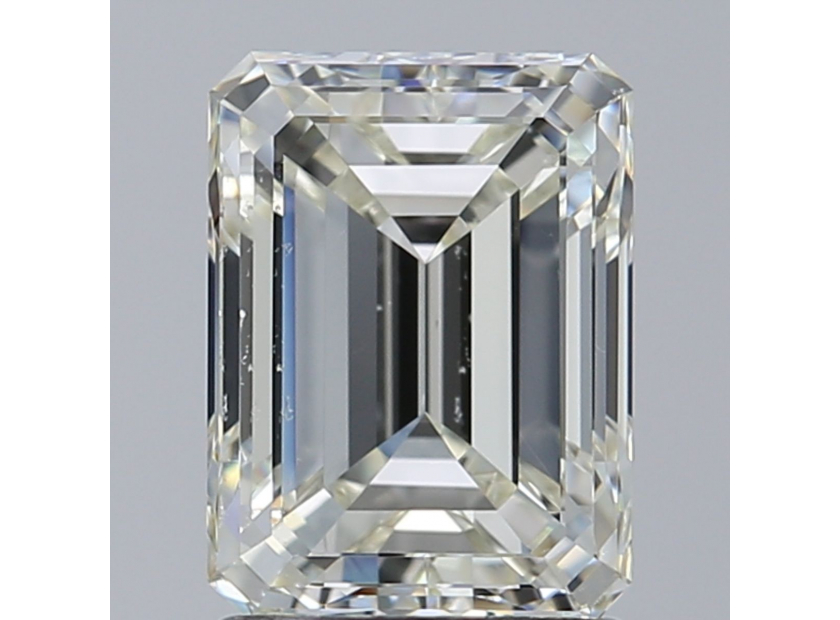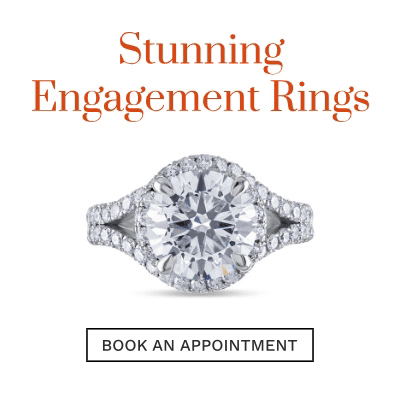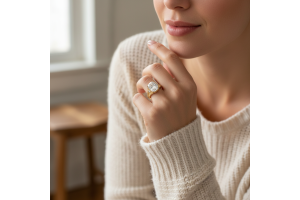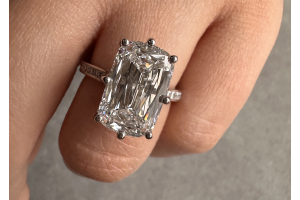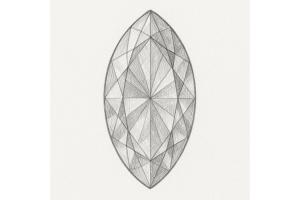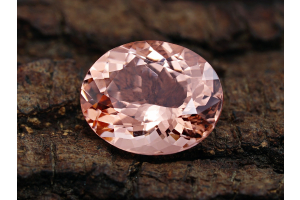GBP
/
GBP
/
Shipping to:
Currency:
Understanding SI1 and SI2 Clarity Diamonds
When purchasing a diamond, clarity is one of the four crucial factors that determine the stone's overall quality and value. Clarity refers to the presence of internal inclusions or external blemishes within a diamond. These imperfections can affect the diamond's brilliance and visual appeal. Diamonds are graded on a clarity scale, and among the more common clarity grades are SI1 (Slightly Included 1) and SI2 (Slightly Included 2).
SI1 Clarity Diamonds:
SI1 clarity diamonds typically contain inclusions that are visible under 10x magnification but are generally not noticeable to the naked eye. This clarity grade offers a good balance between quality and price, making it a popular choice for engagement rings and other fine jewellery. The inclusions in SI1 diamonds are often smaller and located in less conspicuous areas, which helps maintain the diamond's overall brilliance.
SI2 Clarity Diamonds:
SI2 clarity diamonds, on the other hand, have inclusions that may be more prominent and can sometimes be visible to the naked eye, especially in larger stones. However, these diamonds can still exhibit excellent brilliance and beauty if the inclusions are minor or strategically placed. SI2 diamonds are often more affordable than SI1 diamonds, making them an attractive option for those seeking a balance between quality and budget.
Pros of SI1 Clarity Diamonds
- Eye-Clean Appearance: In most cases, SI1 diamonds are eye-clean, meaning that their inclusions are not visible without magnification. This allows for a visually appealing diamond without the higher cost associated with higher clarity grades.
- Better Value: SI1 diamonds offer a good compromise between clarity and cost. You can achieve a high-quality appearance without paying the premium for a higher clarity grade like VS1 or VVS1.
- Versatility: SI1 clarity diamonds are suitable for various types of jewellery, including engagement rings, earrings, and pendants.
Cons of SI1 Clarity Diamonds
- Inclusions Under Magnification: While the inclusions in SI1 diamonds are not typically visible to the naked eye, they can be seen under 10x magnification. This may be a consideration for those who prefer a diamond with fewer internal characteristics.
- Potential Resale Value: While SI1 diamonds offer excellent value, their resale value might be lower compared to diamonds with higher clarity grades.
Pros of SI2 Clarity Diamonds
- Affordability: SI2 diamonds are generally more affordable than SI1 diamonds, making them an appealing option for budget-conscious buyers. This allows for the purchase of a larger carat weight or a more elaborate setting without exceeding your budget.
- Good Visual Appeal: Despite the possibility of visible inclusions, many SI2 diamonds can still appear beautiful and brilliant, especially when the inclusions are minor or well-placed.
- Accessibility: SI2 clarity diamonds are widely available, providing a range of options for various styles and settings.
Cons of SI2 Clarity Diamonds
- Visible Inclusions: One of the primary drawbacks of SI2 diamonds is that their inclusions may be visible to the naked eye, depending on the size and location of the inclusions. This could affect the diamond's overall appearance and appeal.
- Lower Brilliance: Inclusions in SI2 diamonds can sometimes impact the diamond's brilliance and sparkle, particularly if the inclusions are large or centrally located.
- Resale Considerations: Like SI1 diamonds, SI2 clarity diamonds may have a lower resale value compared to diamonds with higher clarity grades.
Choosing Between SI1 and SI2 Clarity Diamonds
When deciding between SI1 and SI2 clarity diamonds, it's essential to consider your priorities. If visual perfection and brilliance are top priorities, an SI1 clarity diamond may be the better choice due to its likelihood of being eye-clean. However, if budget constraints are a significant factor, an SI2 clarity diamond could provide a larger or more intricate piece of jewellery at a lower cost.
It's also important to work with a reputable jeweller who can help you select a diamond with inclusions that are less noticeable and strategically placed, ensuring that you get the best possible value for your money.
FAQ
What does 'eye-clean' mean in diamond clarity?
'Eye-clean' refers to a diamond that appears free of inclusions or blemishes when viewed with the naked eye, without magnification. SI1 diamonds are often considered eye-clean, while SI2 diamonds may or may not be, depending on the specific stone.
Is SI1 or SI2 clarity better for an engagement ring?
SI1 clarity is generally preferred for engagement rings due to its eye-clean appearance, ensuring the diamond looks beautiful without visible inclusions. However, if budget is a primary concern, an SI2 diamond can still be a good choice, especially if the inclusions are minor and well-placed.
Can I see inclusions in an SI2 diamond with the naked eye?
Inclusions in SI2 diamonds can sometimes be visible to the naked eye, depending on their size, type, and location. It's essential to view the diamond in person to determine if the inclusions are noticeable and if they impact the diamond's overall appearance.
Are SI1 diamonds worth the extra cost compared to SI2 diamonds?
Whether SI1 diamonds are worth the extra cost depends on your priorities. If you value a diamond that is eye-clean and has fewer visible inclusions, the higher price of an SI1 diamond may be justified. However, if you're seeking a more budget-friendly option, an SI2 diamond can still offer good visual appeal at a lower cost.
Do SI2 diamonds have lower resale value than SI1 diamonds?
Generally, SI2 diamonds may have a lower resale value compared to SI1 diamonds due to their more noticeable inclusions. However, the overall resale value of a diamond is also influenced by other factors such as carat weight, cut quality, and market demand.
Conclusion
Choosing between SI1 and SI2 clarity diamonds requires careful consideration of both your visual and budgetary preferences. While SI1 diamonds tend to offer a better balance of clarity and value, SI2 diamonds provide an affordable alternative that can still result in a stunning piece of jewellery. By working with a knowledgeable jeweller, you can find the perfect diamond that meets your specific needs and desires.



